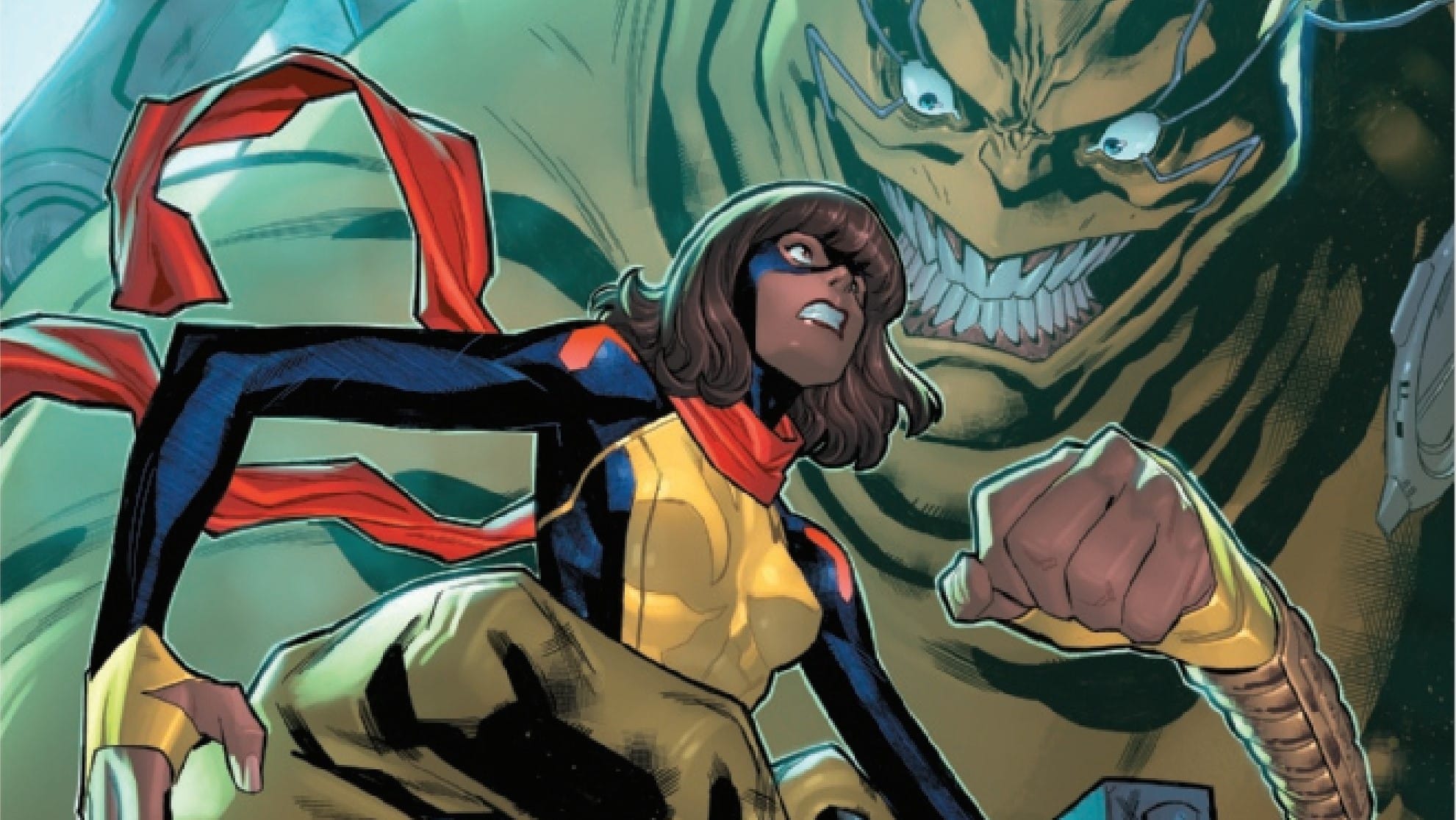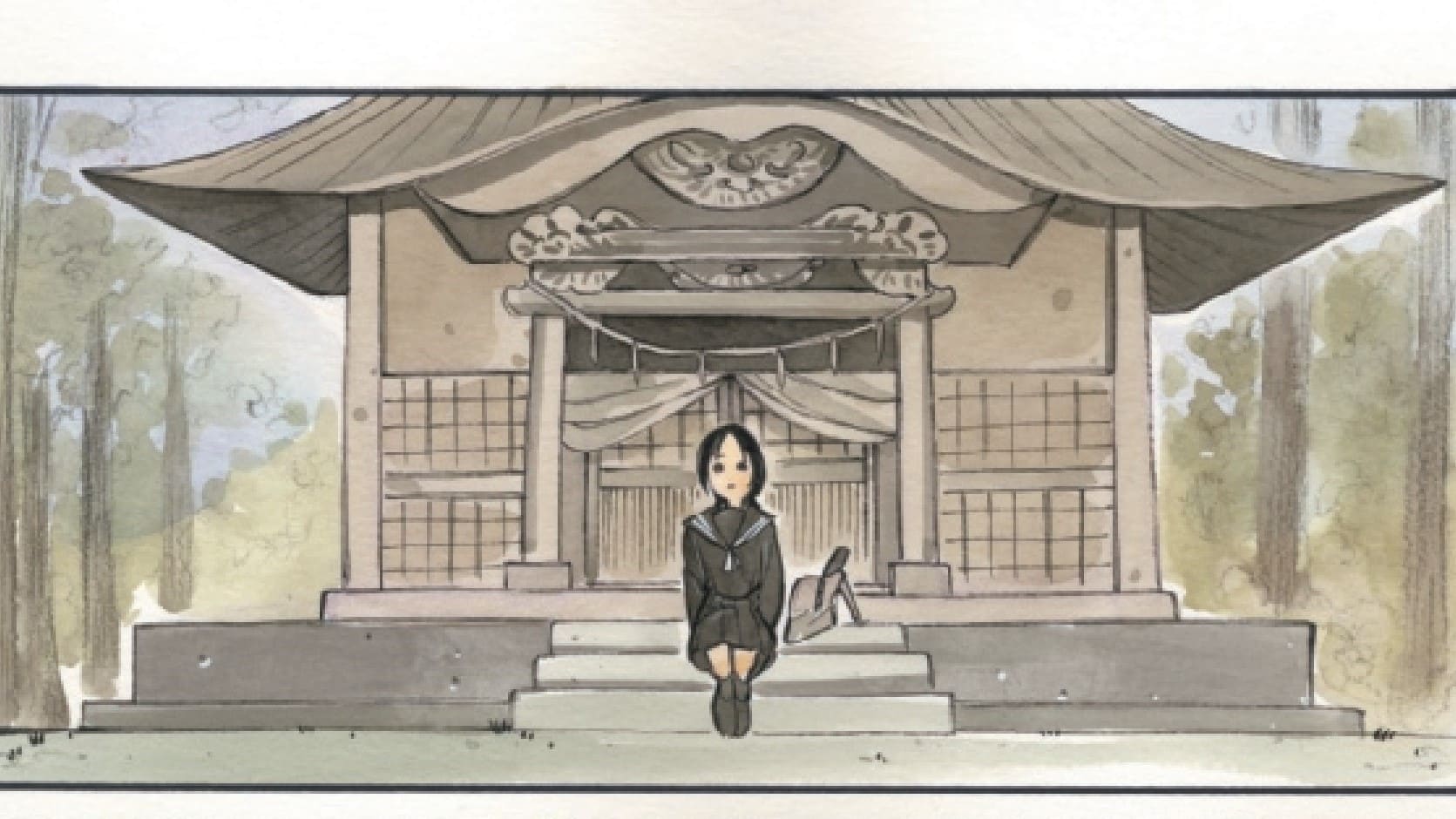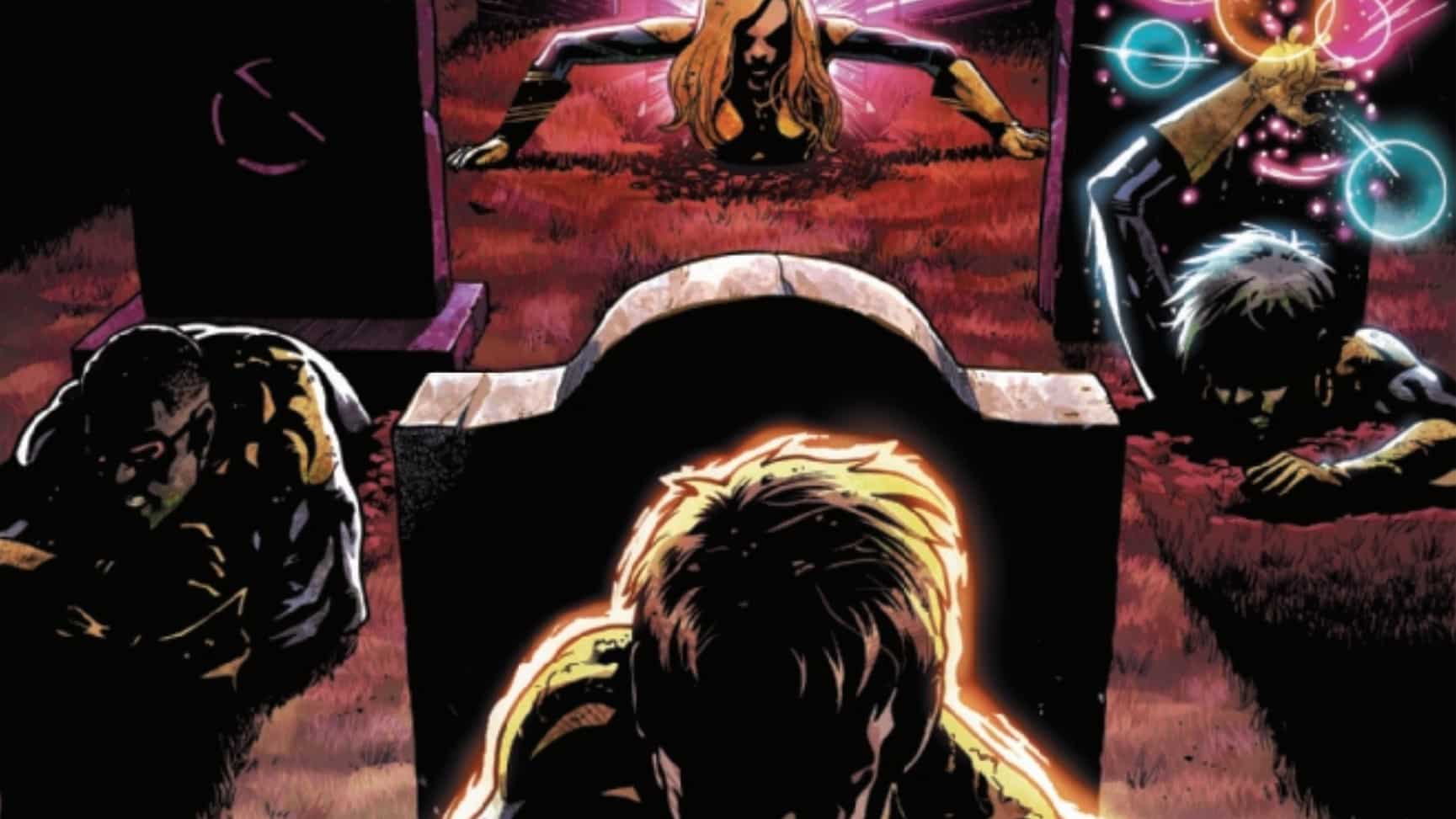In the burning deserts of Afghanistan, Platonov confronts Azra about her secrets and discovers her grand plan. But what will he do with what he learns? Then, in the frigid tundra of Siberia, the Iron Star seeks out an old ally for help. But something is terribly wrong with the Collective Man. Image’s 20th Century Men #5 is written by Deniz Camp, drawn by Stipan Morian and lettered by Aditya Bidikar.
Sean: The fifth and penultimate issue of 20th Century Men is told in three stories that juxtapose one another. The first focuses on Platonov journeying to a Russian paradise and lasts for 29 pages. The second focuses on Azra as she introduces an Afghan paradise and lasts for 18. The third tells of an American Monster called 6Bill and lasts for 6.
It is structured such that these three narratives are spliced into one another. The structure looks like this:
Platonov: 8 pages
Azra: 2 pages
6Bill: 2 pages
Platonov: 3 pages
Azra: 3 pages
Platonov: 8 pages
Azra: 4 pages
6Bill: 2 pages
Platonov: 3 pages
Azra: 3 pages
6Bill: 2 pages
Platonov: 3 pages
Azra: 3 pages
Platonov: 4 pages
Azra: 3 pages
When reading the issue, Azra’s scenes don’t feel like they’re shorter than Platonov’s. This is due in no small part to the structure of each page. For the majority of Azra’s pages, we are presented with single pages full of words (though not to the point of overwhelming the reader). She is expressing her ideas both to the reader as well as to Platonov. She takes her time, given her subject has a lot of base assumptions about what she has done and why she did it. Indeed, every page in her scenes uses dialogue or narration. But most importantly, there is exactly one two-page spread in all of her sections of the text.
By contrast, Platonov’s scenes, while not exclusively using the two-page spread, nevertheless uses them frequently. In total, there are five two-page spreads in his scenes, each of them using sparse dialogue. Furthermore, there is the nature of these scenes. Azra’s story focuses on a conversation with occasional interruptions of narration highlighting her unrestrained feelings about having to talk to a man who helped destroy her country. By contrast, Platonov’s scenes are predominantly narration based with occasional interruptions of dialogue. His thoughts contemplate the possibility of paradise and the frequency of its failure.
But perhaps most striking are the 6Bill sections. By contrast to both Azra and Platonov, there is no text within the 6Bill sections, be it thought or dialogue. With one exception, they are all two-page spreads. In further contrast to Platonov’s scenes, all of the two-page spreads have a smattering of panels alongside them. While the Platonov scenes do use panels with their spreads, there is a chaotic flavor to 6Bill’s that is lacking in Platonov’s. A sense that everything is collapsing and about to burn. This is fitting as they are all scenes of violence and horror. Ones that demonstrate the brutality that will, most likely, destroy the utopia — the paradise — that Azra wishes to see come true.
Edward: It’s a fundamental mistake to think that in dealing with contemporary Islam you’re talking about essentially a faith, rather than a society or many societies. It would be better to focus on contemporary societies rather than reading a book that codifies the faith.
A friend of mine once asked me, “Why does a utopia have to be built?”
Sean: This is highlighted, in no small part, by the work of artist Stipan Morian. In some regards, these 20th Century Men reviews have neglected talking about Morian. Certainly it is easy to get so lost in the thematic and textual implications of the comic that one loses sight of the visual aspects, merely regulating them to offhand comments, if that. Truthfully, it is rare to discuss a work such as Morian’s without descending into incoherent babbling about WHAT THE FUCK DID I JUST SEE! WHAT IS HIS EYES!!
Indeed, the art is extremely vital to the construction of the issue. Consider the number of comics where characters are talking to one another about the various cruelties and issues of the world. How often does an artist rely solely on a series of talking heads that bleed into one another, creating a reading experience that’s a drag for the average reader.
As such, it’s worth noting that this book is beautiful the way a Hicklenton or a Beksinski is. Consider, for example, the death of Rustem. Rustem was an old man Platonov met while visiting Belovodye, a Russian paradise. The pair knew one another from prior to the events of the issue and were quite friendly. We only see Rustem once prior to his death (though he haunts the two sequences in between his introduction and death), and we get a sense that he is a good man.
But what makes his death so striking is the amount of restraint Morian displays in illustrating it. While by no means a pleasant death (Few people would ask to be skewered by a pitchfork), the lack of detail is key. Unlike other deaths in the series, we do not see the blood on Rustem’s shirt. His entrails haven’t been left gushing out of his stomach. There isn’t even any blood on his body.
Instead, we are simply treated to four panels (interrupted by a single reaction shot from Platonov) of Rustem falling to the ground. The first panel has Rustem sandwiched between two narration boxes talking about the factionalization of the collapsing Belovodye. It is a medium shot and the sole vertical panel of sequence (again, aside from the reaction shot directly after).
This is then followed by three horizontal panels stacked atop one another showing Rustem falling down, dead. While some artists could highlight the brutality of the moment via its quickness (and, indeed, Morian does in other parts of the series), the devotion of three panels to the moment forces the reader to linger on Rustem’s corpse.
It should be noted that the panels are roughly sized so as not to be too large. Unlike the penultimate panel of the page, which shows Rustem’s killer still holding a bloody pitchfork with a crazed look in his eye, they instead opt to take up less than a quarter of the page collectively.
Indeed, the paneling on the page itself highlights Morian’s awareness of pacing. The first seven panels are stacked neatly atop one another to highlight the seeming calm of the moment. But when Rustem lies dead in panel seven, the final three panels are placed all over the remaining half of the page, with panels eight and 10 floating atop panel nine.
Sara: That history, the violence of that history is also manifested as attitude: who is higher, lower, who is more, less; in material relations, in expectations of service and servitude that are so often realized in who is required to do what.
At the time, I didn’t have an answer. I just said, “It’s something that’s been on my mind for years and something I’d like to poke at with a stick in the years to come.”
Sean: Similarly, the third 6Bill sequence highlights an atypical degree of restraint in contrast to the other two. For starters, this is not a two-page spread but rather two single pages. The weight of the moment is felt not in the detail on the totem pole of corpses or the mess of human flesh that remains with the swing of a single switchblade knife. We don’t even get a clear picture of 6Bill throughout this sequence. At most, we get the general outline of him.
Rather, it lies in the color choices of the moment and the implication of the drawing. The first half of the sequence primarily uses sharp reds and oranges to highlight the brutality and heat of the fires 6Bill leaves behind. Everything feels dreadful and horrific without a single drop of blood. We have seen Morian’s capacity for brutality. His restraint is so much worse.
This is highlighted in the second half of this page, wherein we are presented with 6Bill killing a U.S. helicopter pilot. For the majority of the page, there’s a sense of calm and serenity. The first three panels (and, indeed, the top half of the page) are draped in blue. It’s only through implication that we see something dreadful has happened. The crashed helicopter juxtaposed with two eagles and an American flag waving backward.
But then the bottom half fades into the reds of before and we see the remains of the pilot after 6Bill got done with him: a severed head shoved crudely onto a stick via the mouth. Two engine parts are jammed into his eyes. That this is one of the tamer sequences in the 6Bill story highlights the raw brutality of it all.
Morian’s art is something to behold. His mastery of color and implication is some of the best in modern comics. That he is at the level of craft that many would take years to achieve so early in his career makes me extremely excited to see where he goes next!
Ramzi: You were the first one who killed innocent people, and you are the first one who introduced this type of terrorism to the history of mankind when you dropped an atomic bomb which killed tens of thousands of women and children in Japan and when you killed over a hundred thousand people, most of them civilians, in Tokyo with fire bombings. You killed them by burning them to death. And you killed civilians in Vietnam with chemicals as with the so-called Orange agent. You killed civilians and innocent people, not soldiers, innocent people every single war you went. You went to wars more than any other country in this century, and then you have the nerve to talk about killing innocent people.
To this day, I still don’t have an answer.






